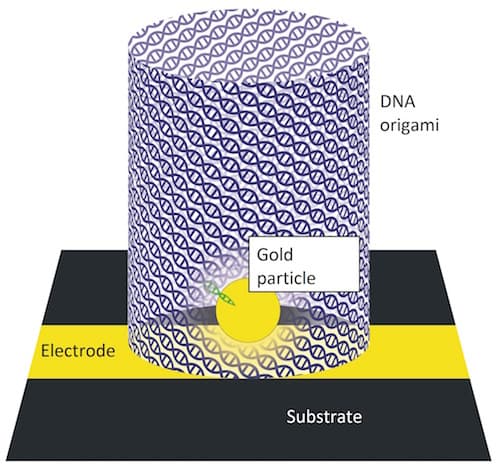DNA Origami Promises Speedier, Cheaper Computer Chips From Future
Dr. Woolley and team from #-Link-Snipped-# are looking at folding the DNA to form specific shapes that can be used to create speedier and cheaper computer chips for the future computing. World over, the electronics makers are looking for various ways and techniques to make the computer chips smaller in size, more efficient while making them faster; and Deoxyribonucleic acid (DNA) might just have the answers researchers are looking for. The team presented their research work at the National Meeting and Exposition of the ACS today.
The scientists refer to the new technique as 'DNA Origami'. Dr. Woolley explains that the team is researching on using DNA's small form factor, base-pairing and self-assembling abilities to develop nano-scale structure. The DNA itself is not a good conductor of electricity. The plan, therefore, is to use DNA as scaffold and then integrate other materials on it to create desired electrical characteristics.

Dr. Woolley further explains that the smallest features on current generation of computer chips are about 14nm wide. Though very small, these are 10 times bigger than the diameter of a solo stranded DNA.
The research team wants to go beyond the typical 2D flat shapes used in circuits. It limits the overall density of the components that can be placed on the chip. Woolley believes that with access to the third dimension, there will be more room to pack components.
One of the main advantages of the new technique being developed employing DNA Origami is that the mass-manufacturing facility will require much lower initial investment. With traditional chips, this cost is upwards of $1 billion; Dr. Woolley explains. He states that the nature itself assembles things very effectively and if that is applied in development of electronic circuits; lot of money can be saved.

Image Credit: Zoie Young, Kenny Lee and Adam Woolley
For details about DNA Origami, please refer to the source link below.
Source: #-Link-Snipped-#
The scientists refer to the new technique as 'DNA Origami'. Dr. Woolley explains that the team is researching on using DNA's small form factor, base-pairing and self-assembling abilities to develop nano-scale structure. The DNA itself is not a good conductor of electricity. The plan, therefore, is to use DNA as scaffold and then integrate other materials on it to create desired electrical characteristics.

Dr. Woolley further explains that the smallest features on current generation of computer chips are about 14nm wide. Though very small, these are 10 times bigger than the diameter of a solo stranded DNA.
The research team wants to go beyond the typical 2D flat shapes used in circuits. It limits the overall density of the components that can be placed on the chip. Woolley believes that with access to the third dimension, there will be more room to pack components.
One of the main advantages of the new technique being developed employing DNA Origami is that the mass-manufacturing facility will require much lower initial investment. With traditional chips, this cost is upwards of $1 billion; Dr. Woolley explains. He states that the nature itself assembles things very effectively and if that is applied in development of electronic circuits; lot of money can be saved.

Image Credit: Zoie Young, Kenny Lee and Adam Woolley
For details about DNA Origami, please refer to the source link below.
Source: #-Link-Snipped-#
0
